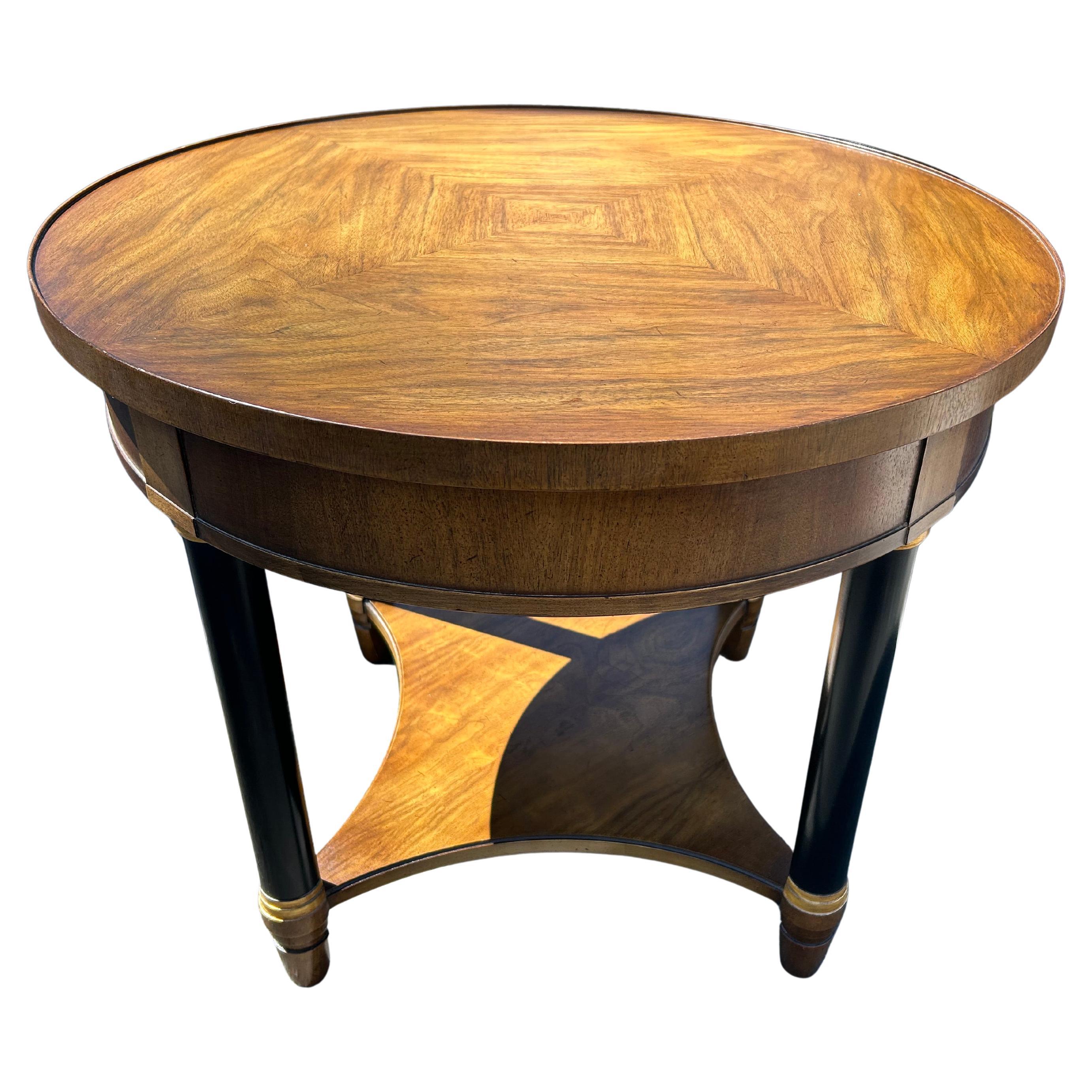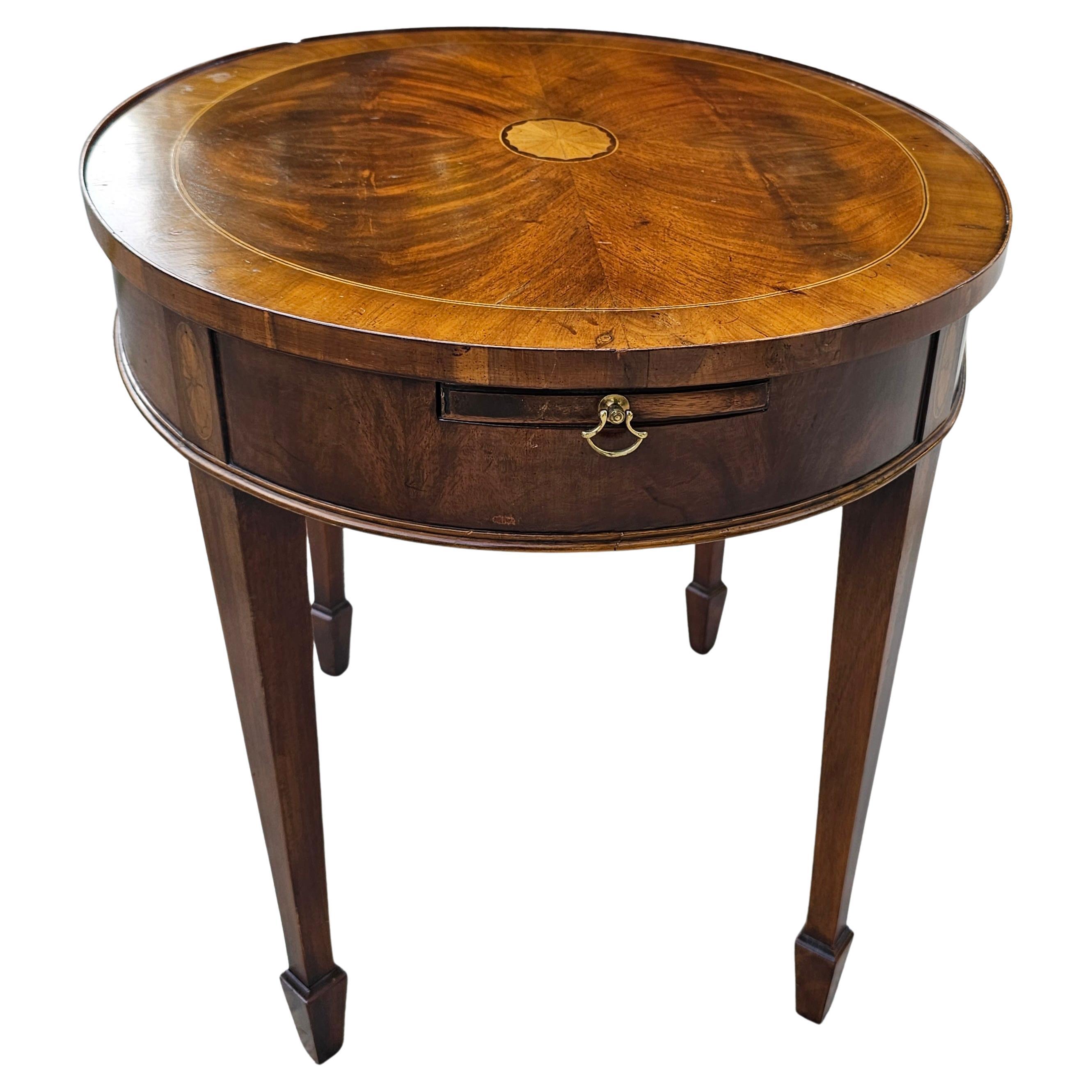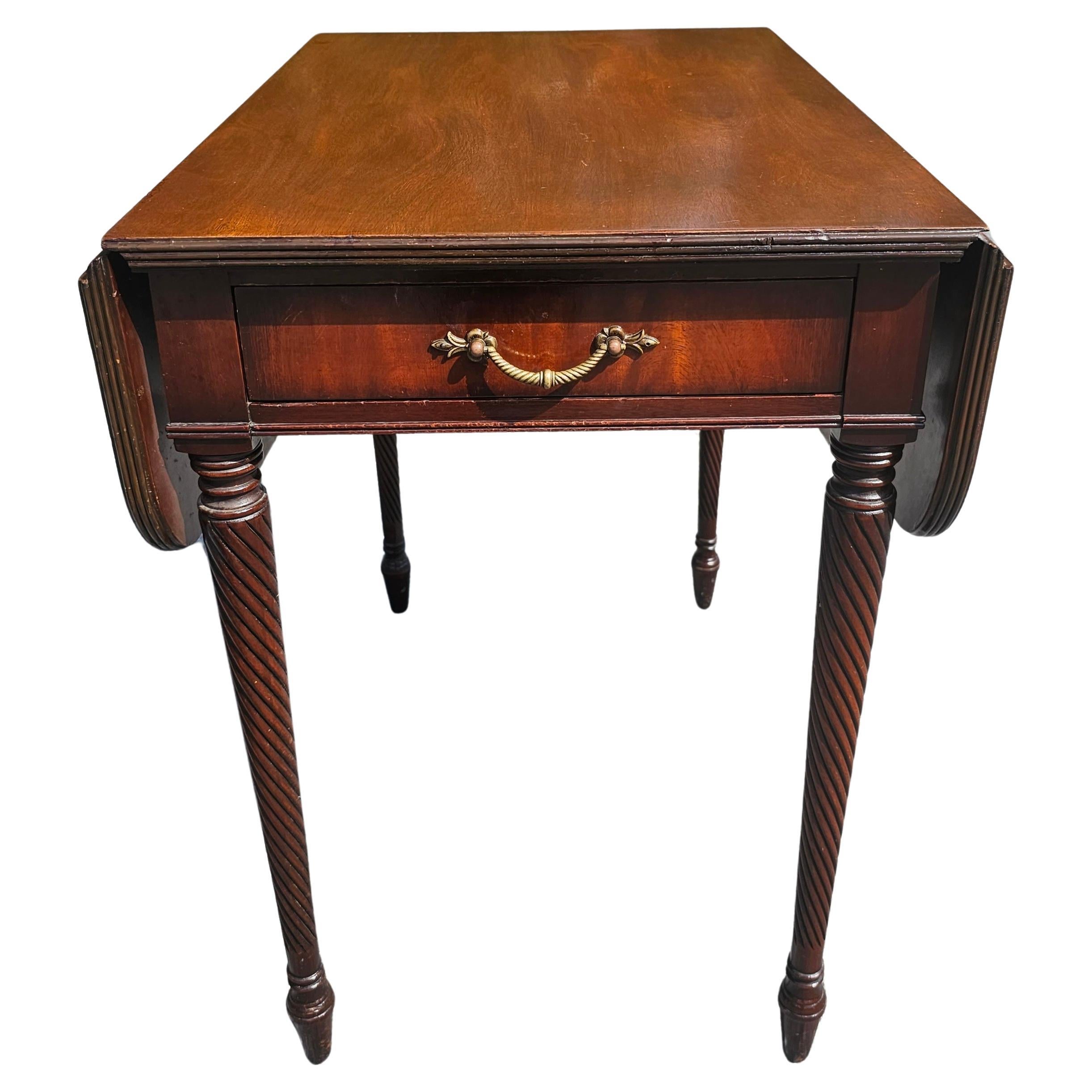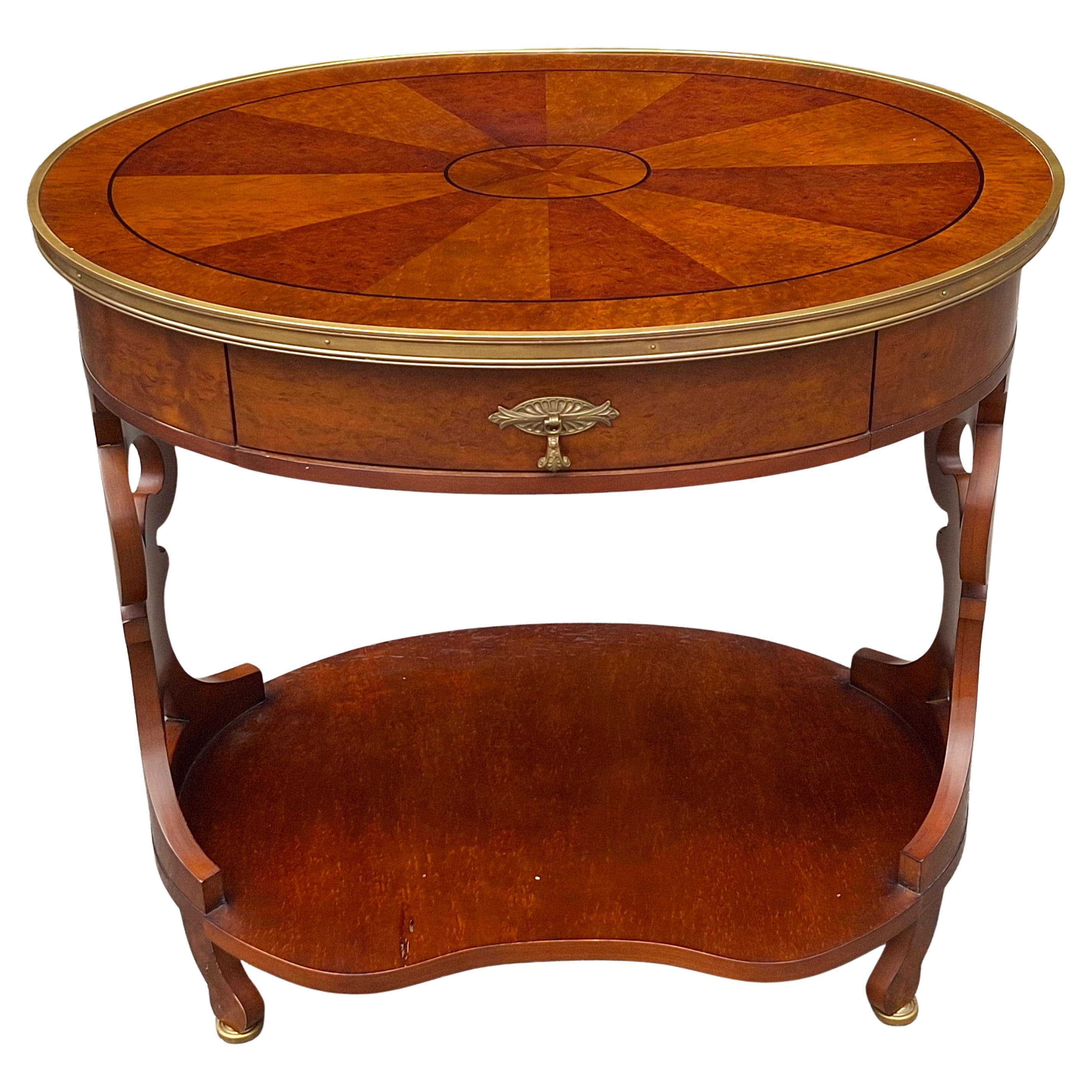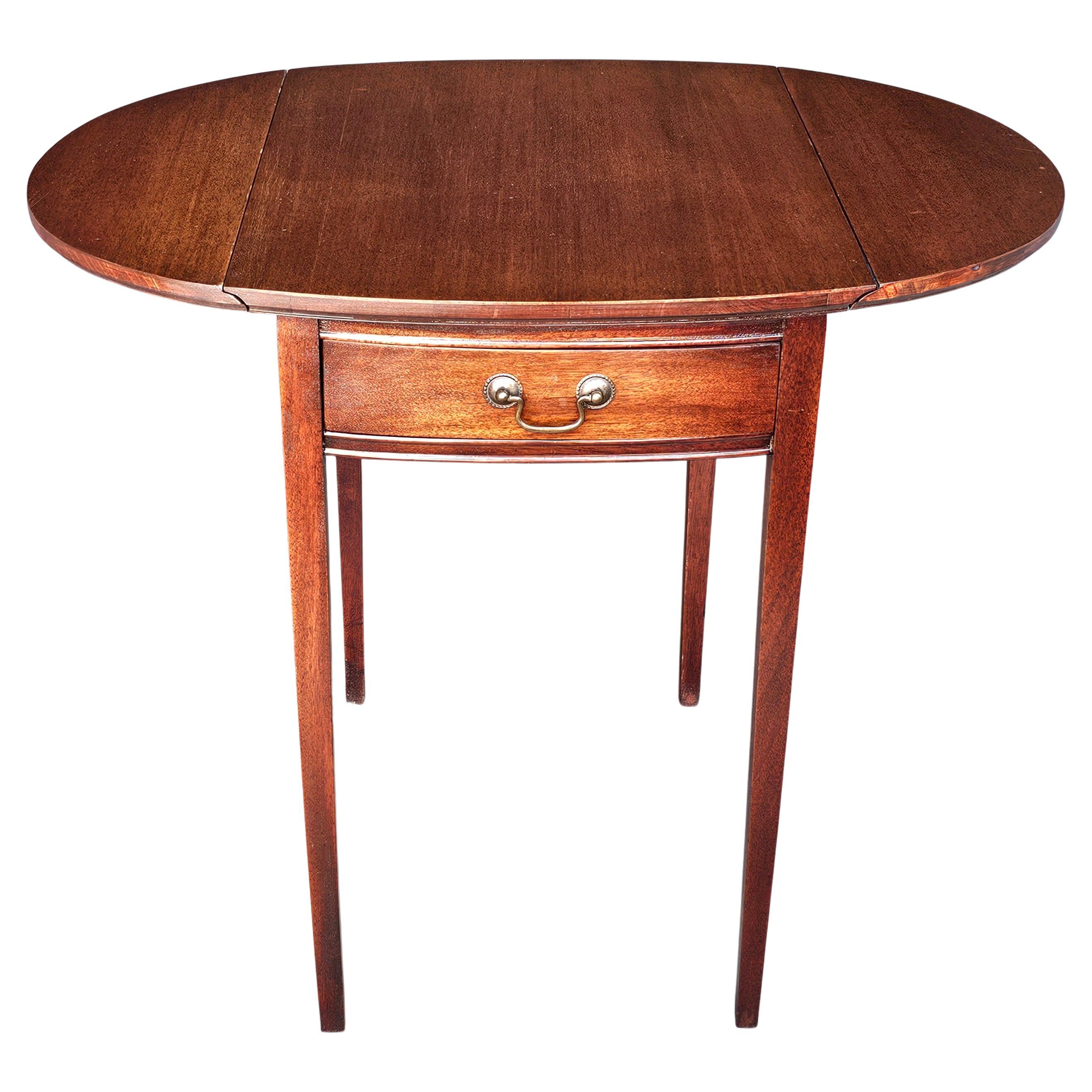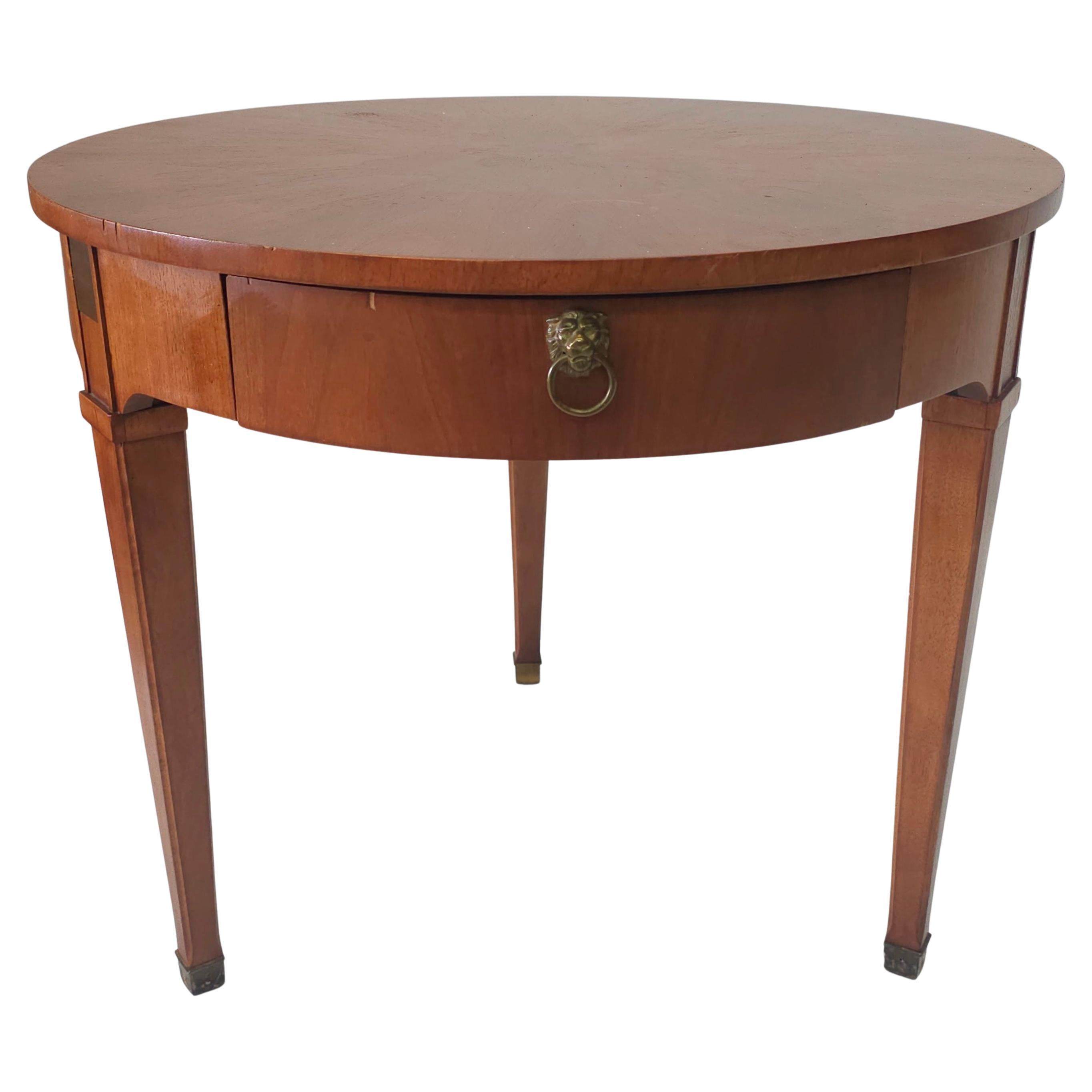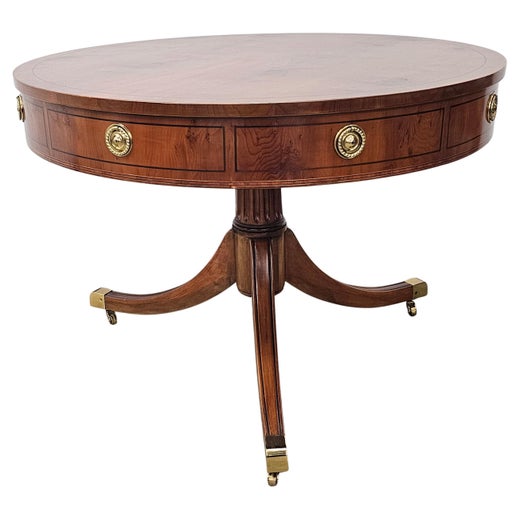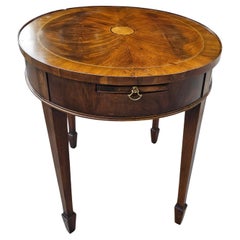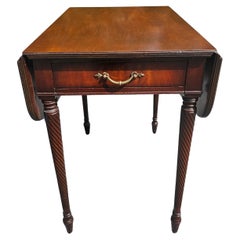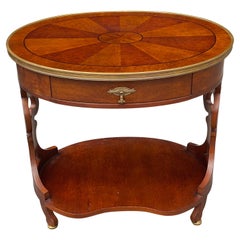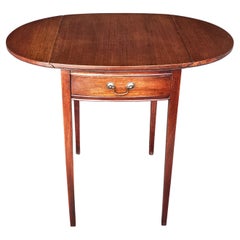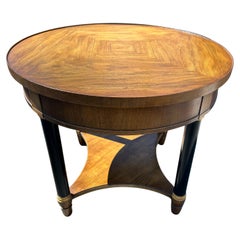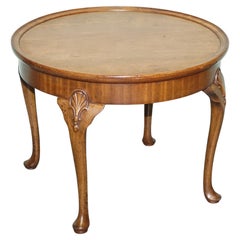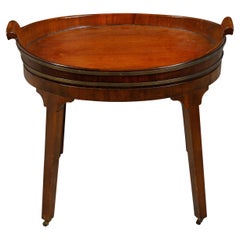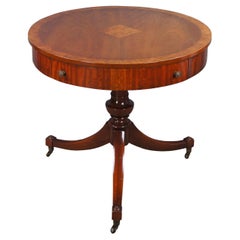W. A. Berkey & J. Widdicomb Oval Mahogany Occasional Serving Table on Wheels
About the Item
- Creator:John Widdicomb (Manufacturer),William A. Berkey Furniture Co. (Manufacturer)
- Dimensions:Height: 27 in (68.58 cm)Width: 21 in (53.34 cm)Depth: 28 in (71.12 cm)
- Style:Mid-Century Modern (Of the Period)
- Materials and Techniques:
- Place of Origin:
- Period:
- Date of Manufacture:1950s
- Condition:Wear consistent with age and use.
- Seller Location:Germantown, MD
- Reference Number:1stDibs: LU5751227909362
William A. Berkey Furniture Co.
In 1855, William Berkey arrived in Grand Rapids, Michigan, and founded a mill to manufacture window sashes and other wood building products. He was joined by his brother, Julius, who later began manufacturing what became known as the Berkey table. This was highly successful, and soon the Berkey brothers were concentrating on making furniture.
The company took on various partners over time, including George W. Gay, who bought an interest in the company in 1866 to form Berkey Brothers & Gay. In 1873, William Berkey withdrew from the company, and Julius Berkey and George W. Gay incorporated to form the Berkey & Gay Furniture Company. In 1874, the new company opened its six-story factory, complete with wholesale and retail showrooms, in Grand Rapids. By 1882, this factory covered three city blocks. The company is known for making Victorian furniture.
George W. Gay, although continuing to be involved with Berkey & Gay, also struck out on his own business ventures. One of these was the Oriel Cabinet Company, which he established in 1880. Oriel Cabinet constructed a factory at this site in the 1880s, but the original factory was destroyed by fire in 1890. In 1892, the company constructed a new factory, which continues to occupy the site.
Both Oriel Cabinet and Berkey & Gay continued independently until 1911, when the two companies merged. The Oriel factory became Berkey & Gay's Plant No. 1 following the merger, and an addition was immediately made to the plant in 1912. In 1919 the company further expanded the factory 240 feet north along Monroe Avenue.
In 1920, the company merged with the Wallace Furniture Company and the Grand Rapids Upholstery Company to form Consolidated Furniture Companies but continued to use the trademark Berkey & Gay because of its name recognition.
Sales increased in the 1920s and the company aggressively expanded. However, when the Great Depression hit, the company was unable to continue financing its new sites and was forced to sell to the Chicago-based Simmons Company. Even this was not enough, as Simmons declared bankruptcy in 1931, and the Grand Rapids factories closed their doors.
Local stockholders reopened the factory in 1935, and continued production until World War II, when it was converted to wartime needs. After the war, an attempt was made to convert back to furniture production, but the company was again forced to declare bankruptcy in 1948 and closed the factory for good.
The Berkey & Gay Furniture Company used three different types of labels to mark the tables and other furniture that they manufactured. The first label was branded into the wood and can often be found inside the drawers of authentic Berkey & Gay sideboards and other case pieces. Around the year 1900 the branded type label was replaced by a paper label. The brass label was used starting around the 1920s until Berkey and Gay went out of business in the 1940s.
Find antique William A. Berkey furniture for sale on 1stDibs.
(Biography provided by Schear Brothers)
John Widdicomb
In the Widdicomb family, furniture ran in the blood. Furniture maker George Widdicomb emigrated from England to the United States in 1845, eventually setting up a cabinet shop in Syracuse, New York, before moving west to Grand Rapids, Michigan. There, he opened a shop with his four sons, including John Widdicomb, whose name would help carry the family legacy into the 20th century.
A wealth of pine and oak forests rendered Grand Rapids a logging center during the 1800s, and it eventually gained recognition for its furniture industry. The city became a destination for furniture makers who hailed from across the United States and beyond. The Widdicomb shop in Grand Rapids prospered, as the patriarch’s formal English training allowed him to produce pieces with superior craftsmanship compared to those of his competitors. Although the Civil War halted business and took the life of one of the Widdicomb brothers, the family’s survivors would start anew as Widdicomb Brothers and Richards, soon renamed the Widdicomb Furniture Company.
John Widdicomb, however, split from the family business in 1897 to create the John Widdicomb Company, where he would go on to focus on Louis XV- and French Provincial-style furnishings. Chairs made in these styles have distinct characteristics, such as floral motifs carved in the frames and gently angled backrests. John's company also remained a family affair: The founder’s son, Harry, assumed control of the company when his father died in 1910, while John's nephew Ralph Widdicombe — who retained the English spelling of his last name and joined the John Widdicomb Company at its start — designed every single piece of the offerings at his uncle's manufacturing outfit until he retired in 1951. Ralph was an internationally distinguished furniture designer whose modern mahogany bedroom suite won first prize at the Paris Exposition in 1900.
The original iteration of Widdicomb, which was helmed by John's older brother William while John ran his own brand, had shifted from making period revival styles of furniture, such as Georgian and Chippendale, to manufacturing modern pieces in the late 1920s. Admirers of mid-century modern furnishings likely recognize Widdicomb for the partnerships with iconic designers such as Frank Lloyd Wright, T.H. Robsjohn-Gibbings and Mario Buatta. In 1959, master woodworker George Nakashima created his Origins collection for Widdicomb when the firm merged with Mueller Furniture Corporation and was known, for around 10 years, as Widdicomb-Mueller. Origins, a revered Shaker-influenced group of nightstands, upholstered lounge chairs, dining-room tables and more, saw Nakashima working with woods like Carpathian elm and laurel in his Pennsylvania studio.
Eventually, the two Widdicomb companies would combine in 1970, operating under the name John Widdicomb Co.
In 2002, the business closed after more than a century of operations, and its assets were acquired by Stickley Furniture. Interestingly, it was not the first time Widdicomb and Stickley overlapped: In the final years of the 19th century, the companies opened a shared storehouse in London, while John Widdicomb and Albert Stickley would travel Europe together for the purposes of research.
Today, Stickley continues to produce John Widdicomb Company furniture, including French, Italian, English and Russian reproductions, as well as modern works from the first half of the 20th century.
Find vintage John Widdicomb bedroom furniture, tables, case pieces and more on 1stDibs.
- ShippingRetrieving quote...Shipping from: Germantown, MD
- Return Policy
More From This Seller
View AllMid-20th Century American Mid-Century Modern Gueridon
Mahogany
Early 20th Century American George III Drop-leaf and Pembroke Tables
Mahogany
Late 20th Century American Biedermeier Side Tables
Brass
20th Century American Federal Drop-leaf and Pembroke Tables
Mahogany
Mid-20th Century American Mid-Century Modern Gueridon
Brass
Mid-20th Century American Other Side Tables
Walnut, Burl
You May Also Like
Vintage 1960s American Regency Revival Side Tables
Walnut
20th Century British Side Tables
Walnut
Antique 19th Century English Side Tables
Brass
Mid-20th Century American Regency Pedestals
Mahogany
20th Century American Federal Side Tables
Brass
Vintage 1950s American Queen Anne Side Tables
Brass
